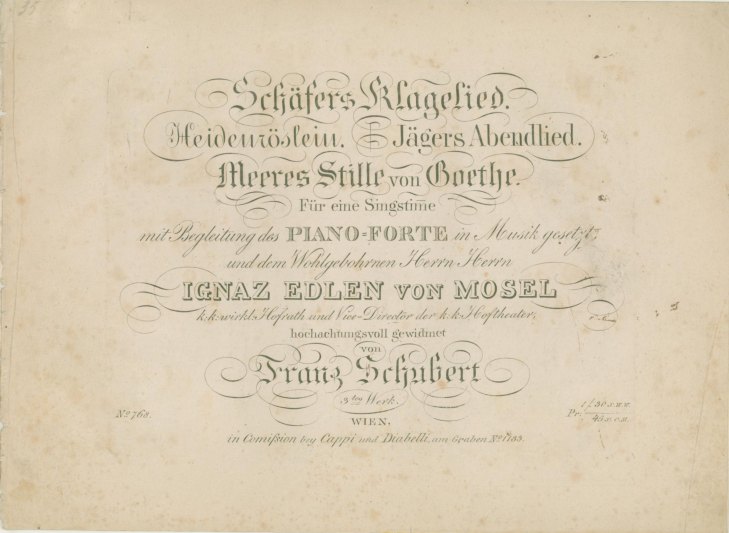 Enlarge Image
Enlarge Image

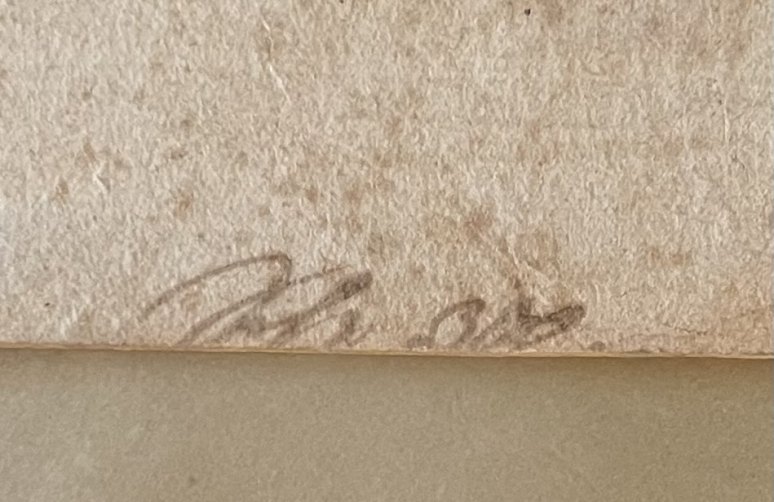
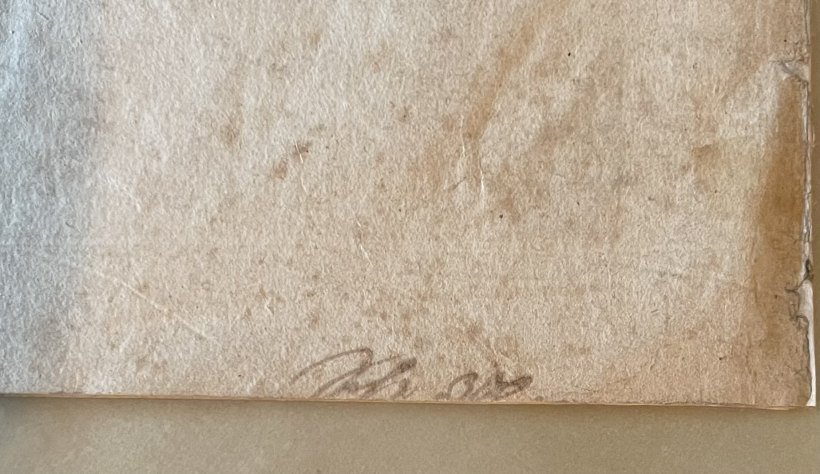
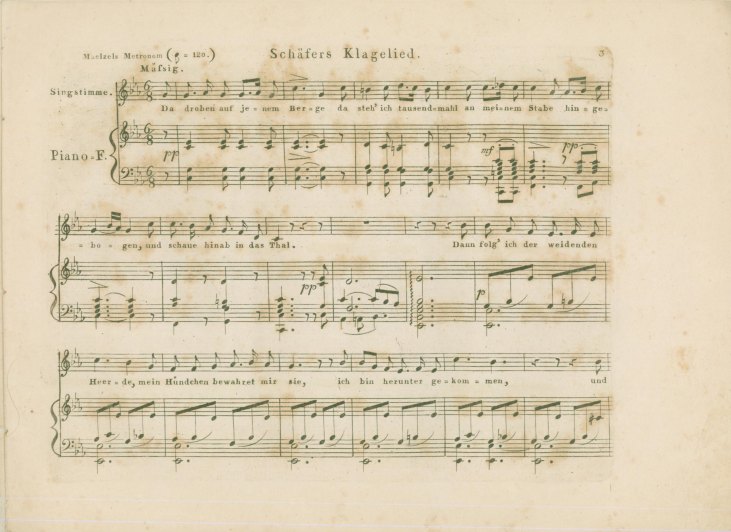
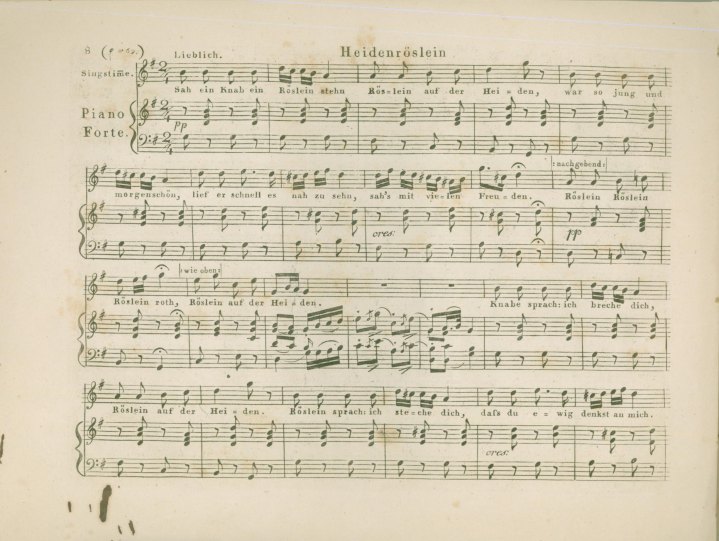
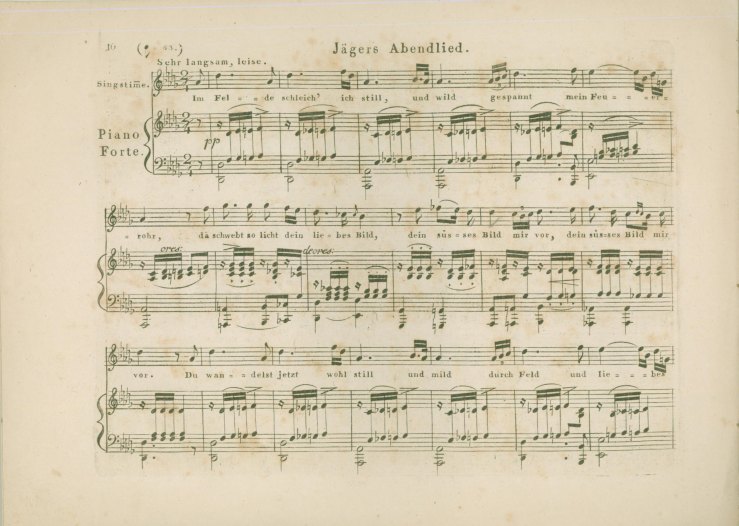
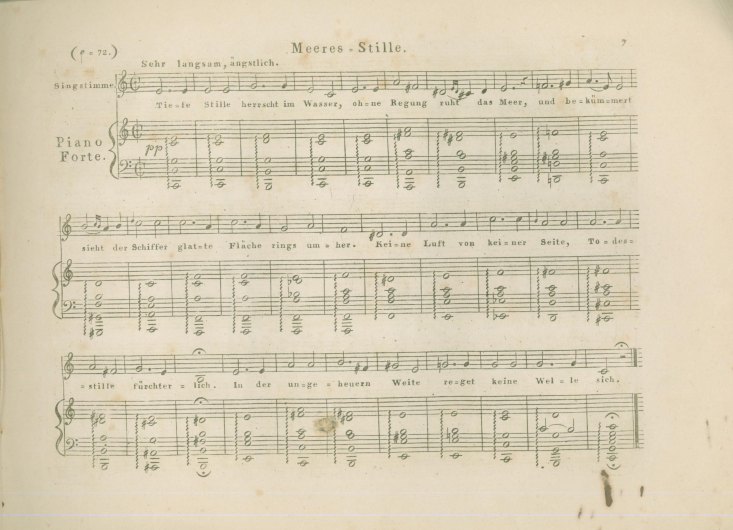
Schubert, Franz (1797-1828)
Schäfers Klagelied. Heidenröslein. Jägers Abendlied. Meeres Stille von Goethe. Für eine Singstime mit Begleitung des Piano=Forte. 3tes Werk.
With Schubert's control mark and paraphed almost certainly by Schubert on back page. Cappi und Diabelli: Wien, [1821]. first edition. Engraved. Oblong quarto. Disbound. Spine unobtrusively reinforced with paper tape. Title page foxed and with light abrasion at right. Some spotting throughout. Small ink stains at bottom margin of pp. 7-8 (not affecting). Small round abrasion at bottom stave of p. 7 ("Meeres Stille", affecting bar line but not any notes). Overall in very good condition and a nice copy.The very old tradition of a composer marking scores received from a publisher was an insurance against fraud and a common practice in many European countries. Schubert only gave his control mark on a handful of his first editions: only in 1821-1822 and only for Capi & Diabelli. The examples we know of are on the bottom of the back page, as in the example in our offering of the Op. 3 songs.
It is our opinion that this control mark is almost certainly by Schubert himself. These early editions with control marks are rare and highly desirable. Regarding more about the authenticity of the paraph, please see below.
“Schubert’s control marks have aroused much debate and speculation, some scholars opining that these markings were not written by Schubert himself, but by his brother Ferdinand or Leopold von Sonnleithner. A study of the early Schubert editions in the Gesellschaft der Musikfreunde, Vienna, which houses important collections deriving from Spaun, Sonnleithner, Brahms, Witteczek and Hoboken, shows that the situation is, in fact, a good deal more complicated, since a number of early hands are involved. A few of the markings, for example, in Brahms’s, Spaun’s and Sonnleithner’s copies do strongly recall Schubert's own hand: indeed Brahms himself identifies Schubert’s hand on his copies of 'Gretchen am Spinnrade,' op. 2, and 'Der Wanderer,' op. 4. The positive identification of the composer’s hand from such short inscriptions is always open to question, but we can say that the control marks are present only on the earliest issues of the songs published as Opus 1 to Opus 14, dating from 1821-1822, and confirm these are among the earliest copies issued directly on behalf of the composer.”
